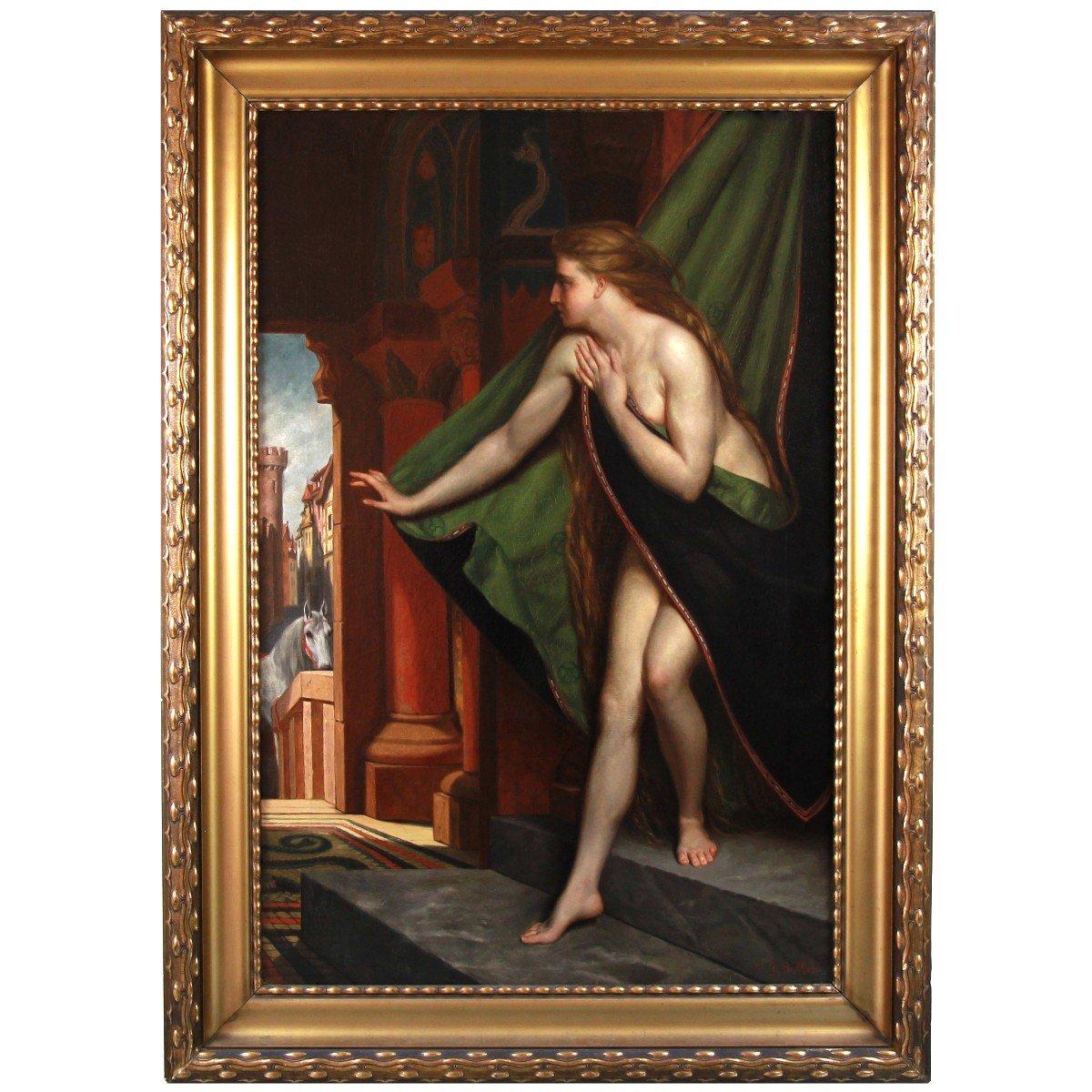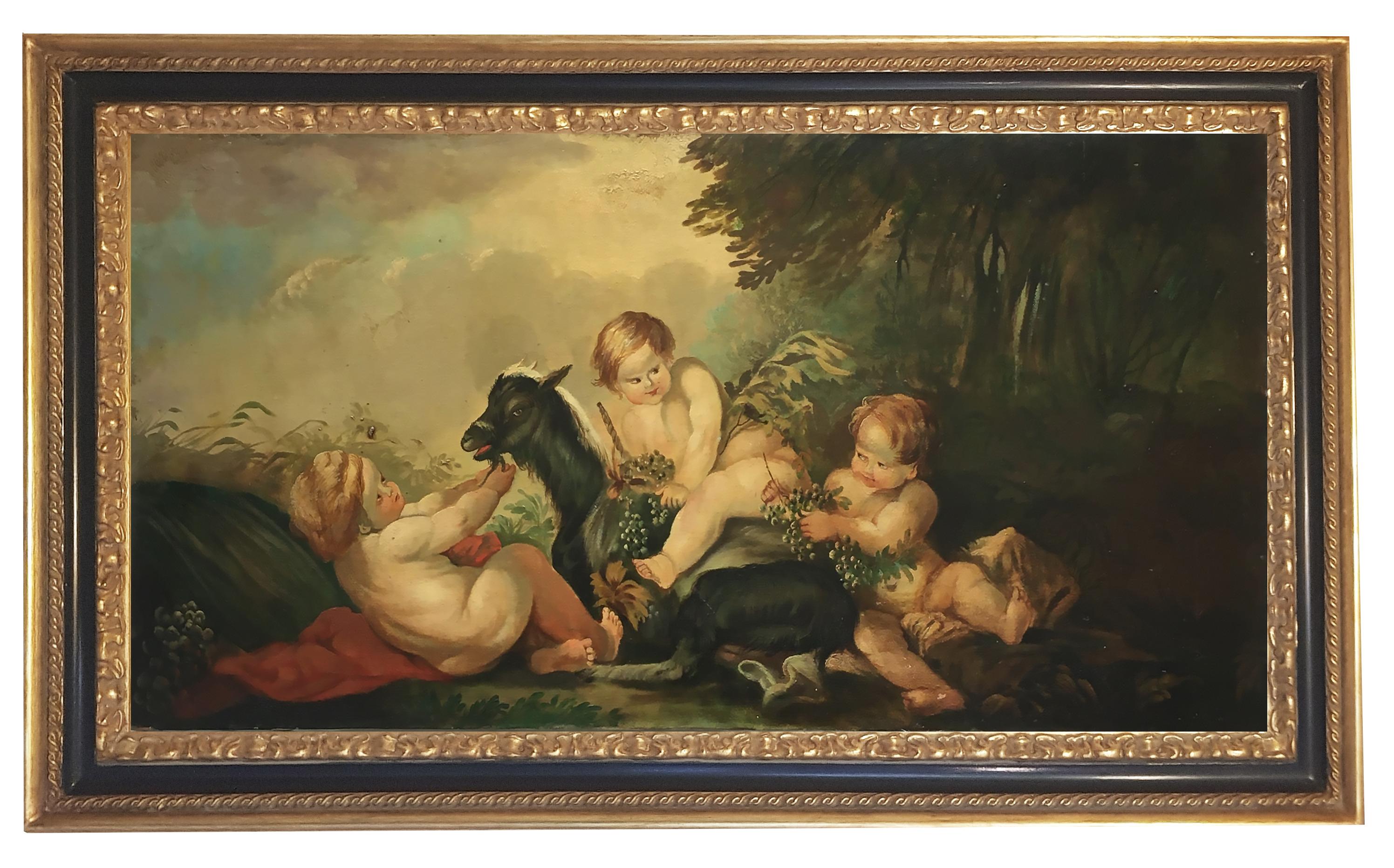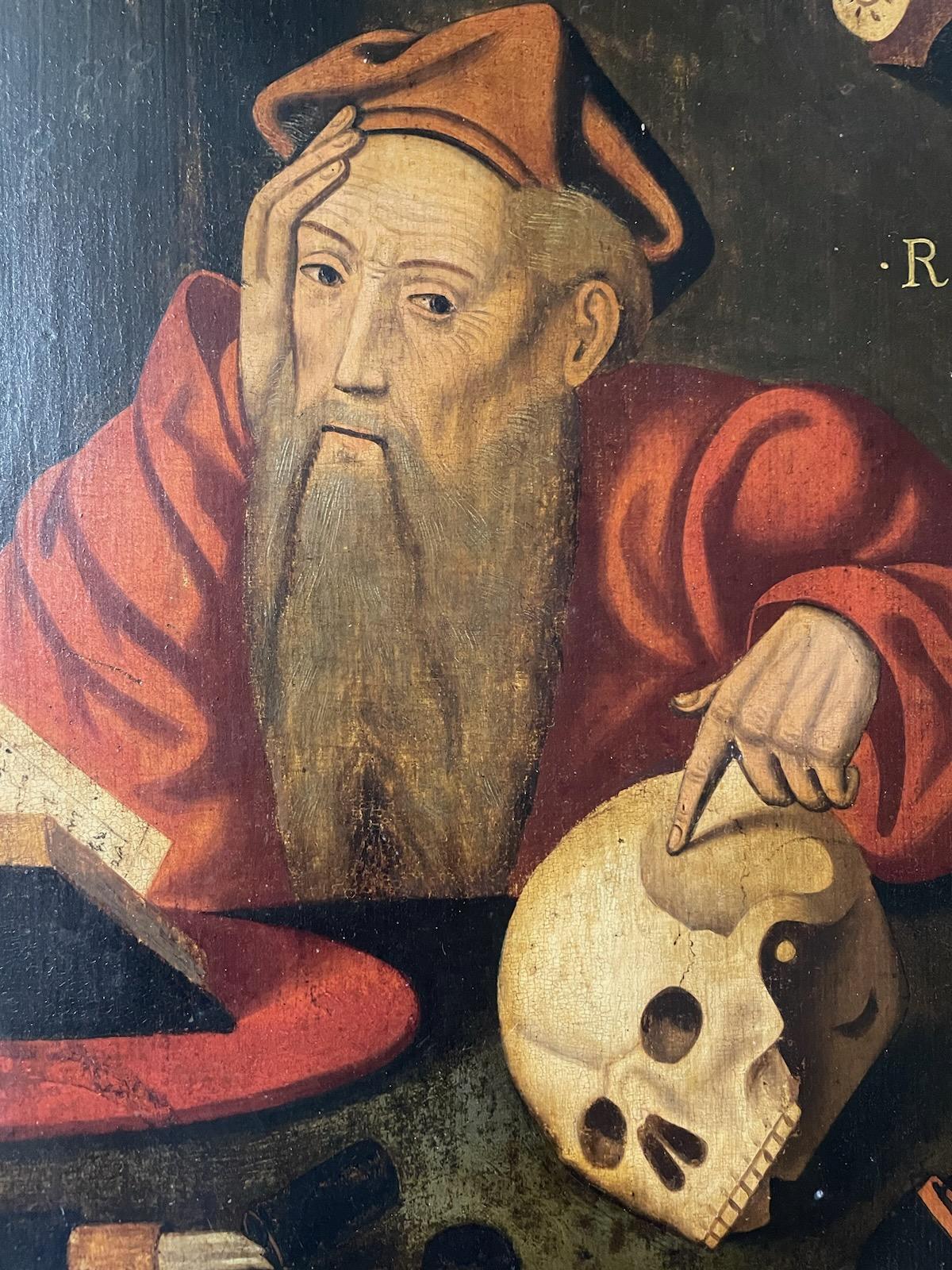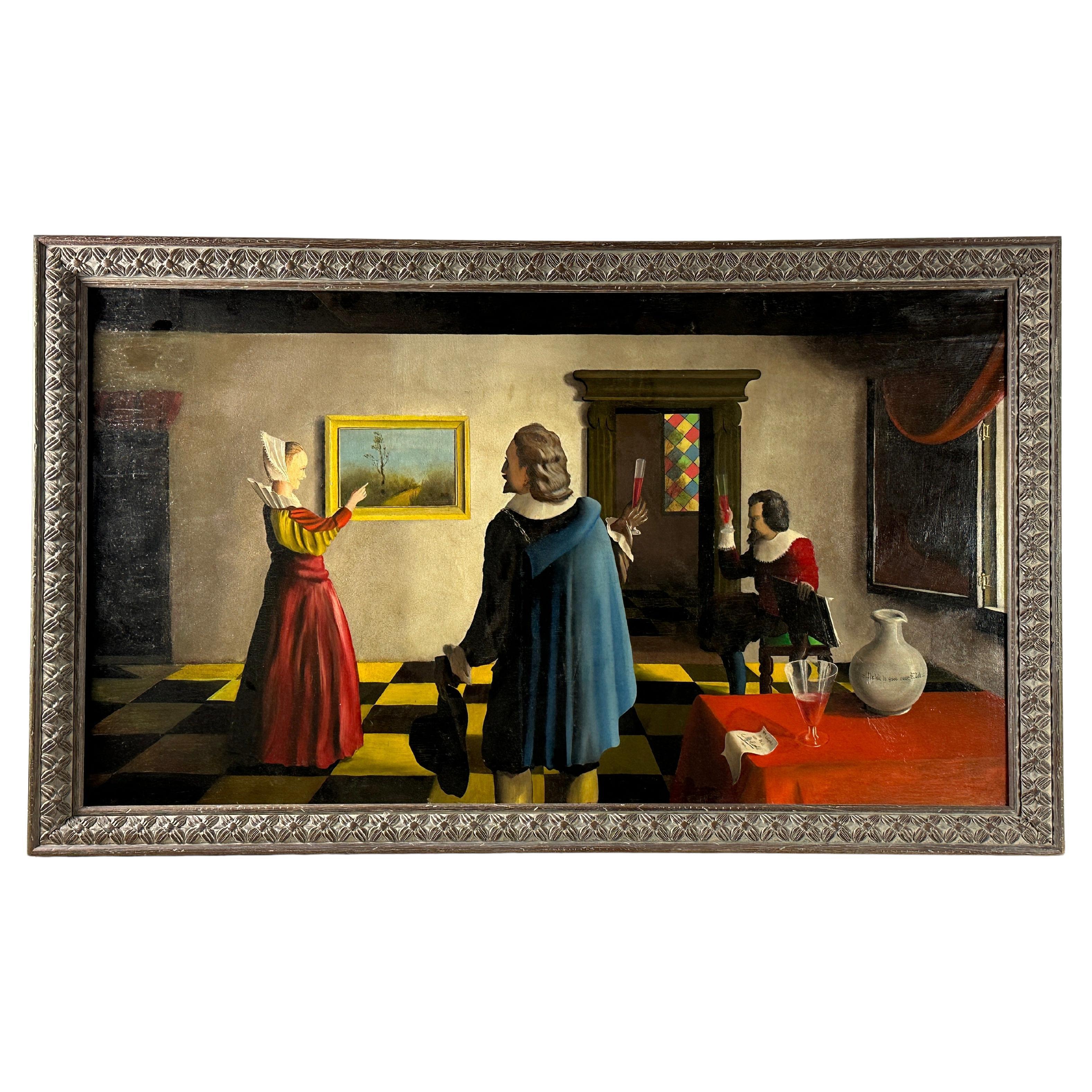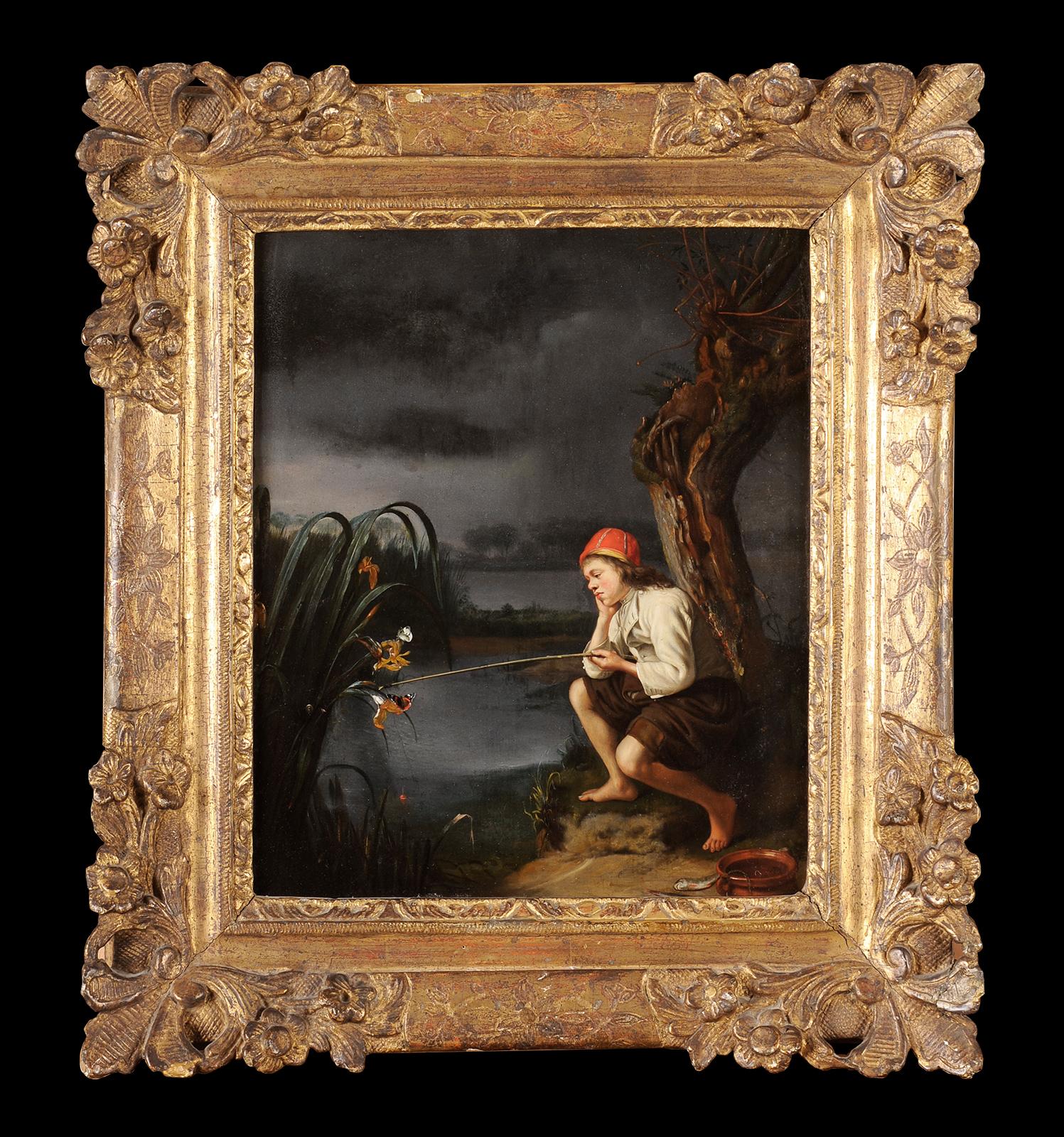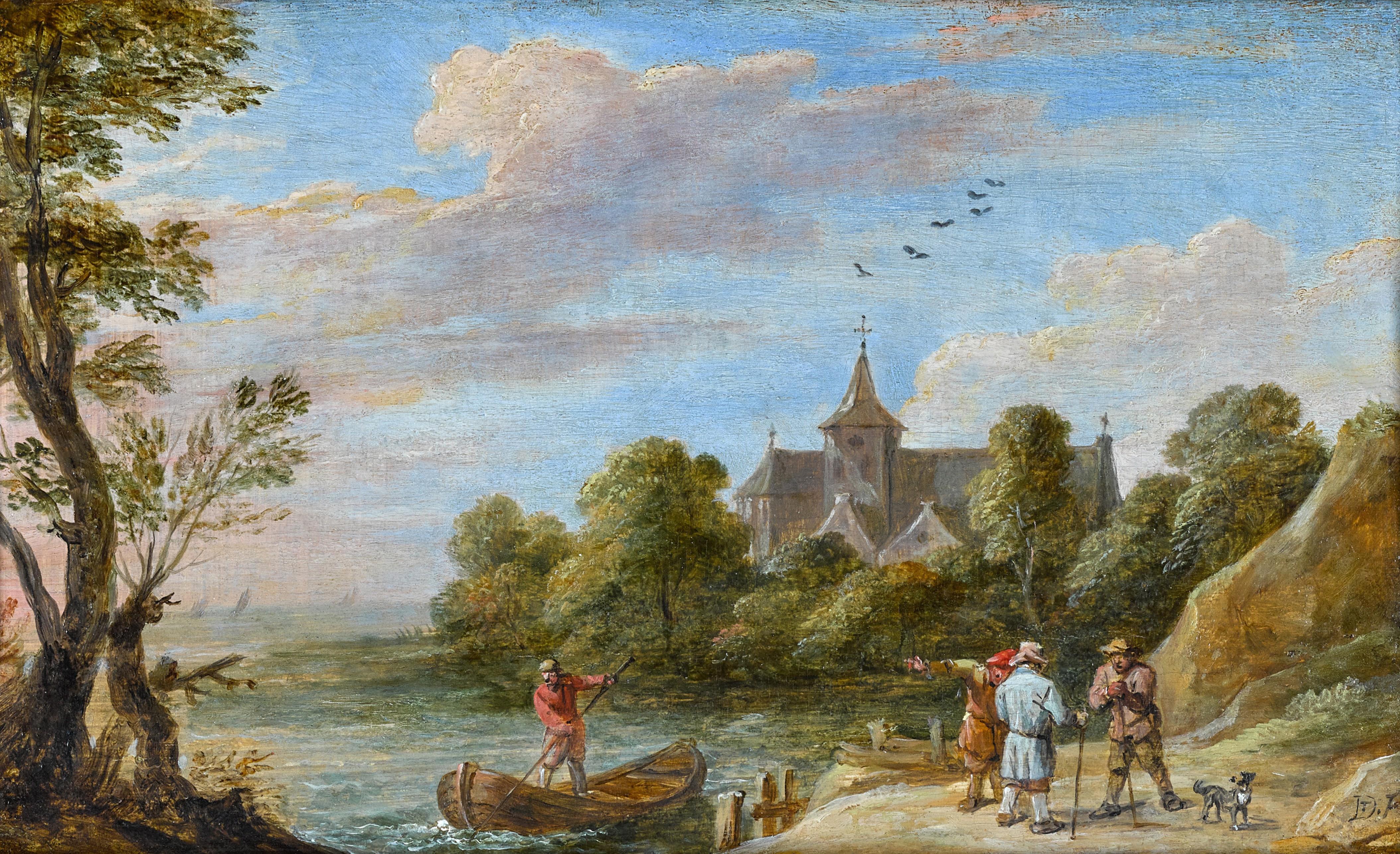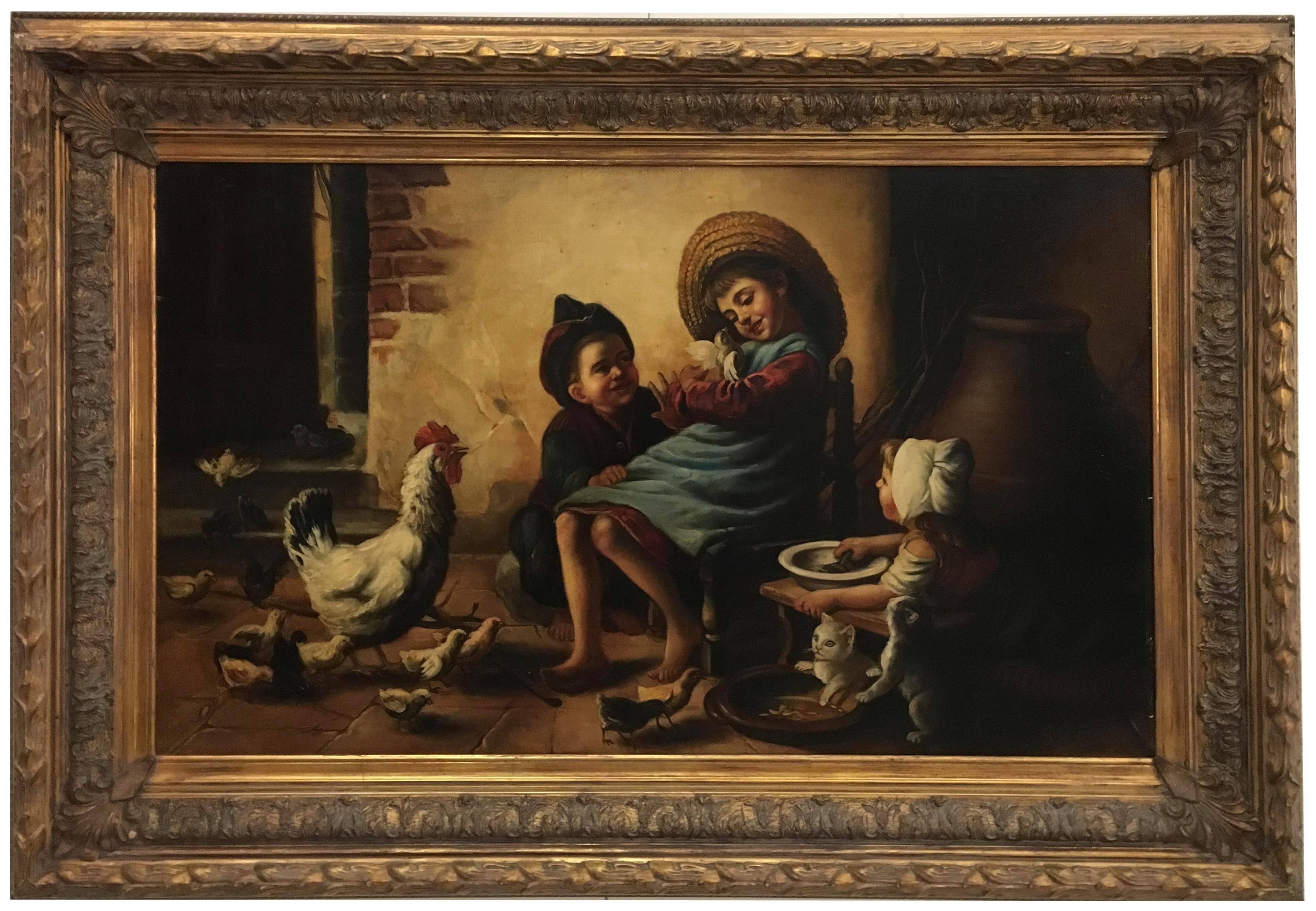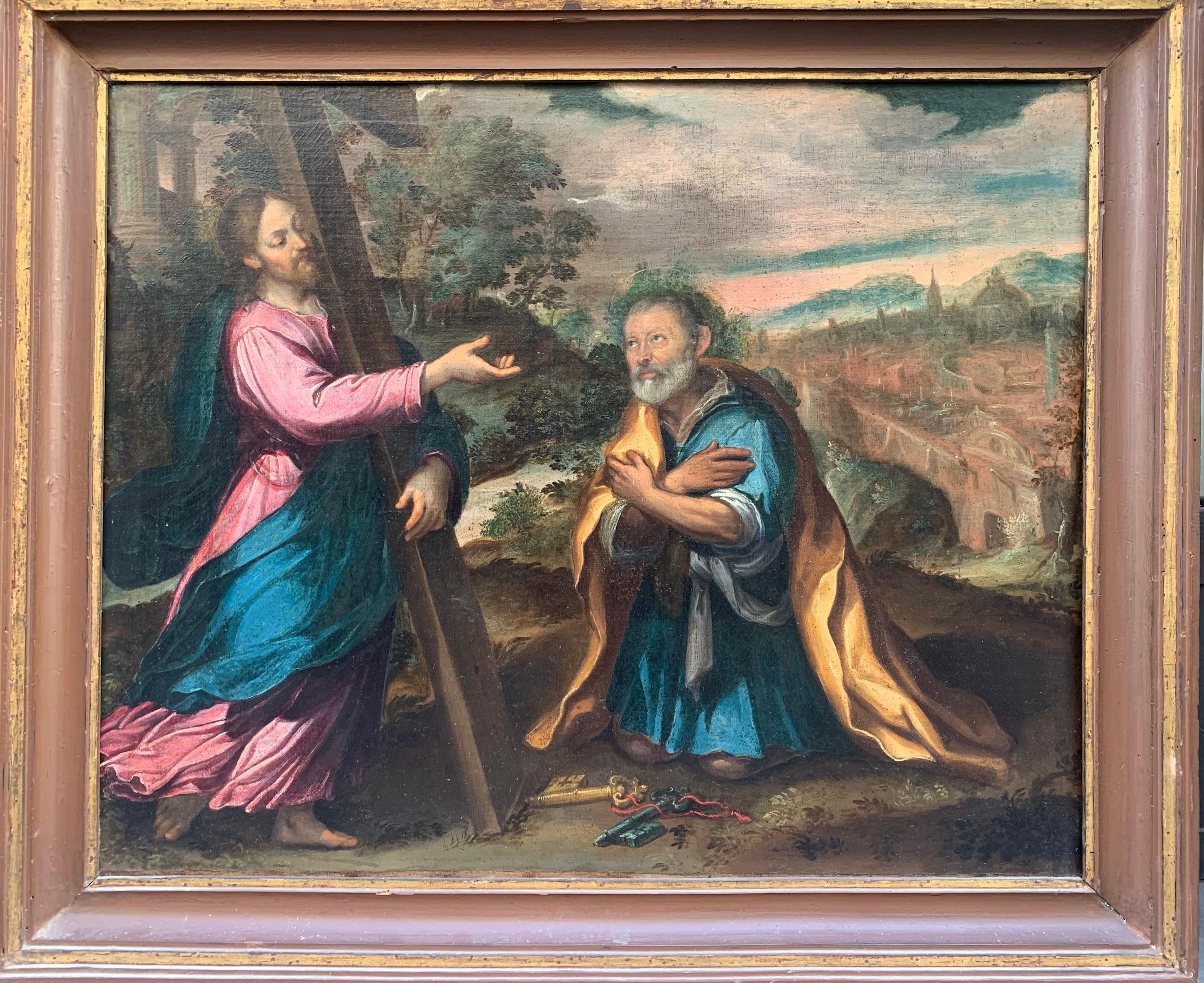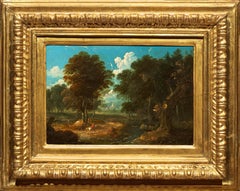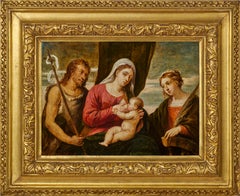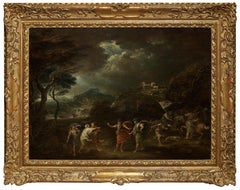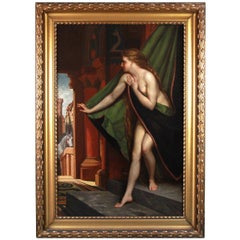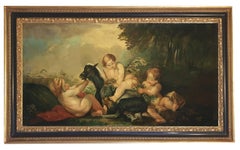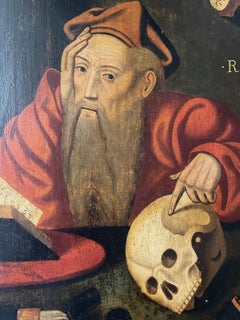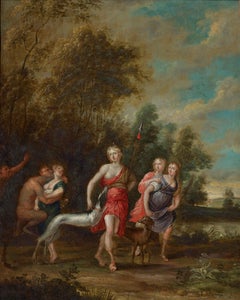
Pair of Oil Paintings of Diana's Departure for the Hunt and the Bath of Diana
Want more images or videos?
Request additional images or videos from the seller
1 of 15
UnknownPair of Oil Paintings of Diana's Departure for the Hunt and the Bath of DianaCirca 1650
Circa 1650
About the Item
- Creation Year:Circa 1650
- Dimensions:Height: 18.31 in (46.5 cm)Width: 14.69 in (37.3 cm)
- Medium:
- Movement & Style:
- Period:Mid-17th Century
- Condition:The size is slightly different by a few mm from one to another Price indicated is for the pair Size with the frame : 55 x 46 cm Provenance : French private collection The paintings have been restored - condition report available on request.
- Gallery Location:PARIS, FR
- Reference Number:1stDibs: LU156828230182
About the Seller
5.0
Vetted Seller
These experienced sellers undergo a comprehensive evaluation by our team of in-house experts.
Established in 2020
1stDibs seller since 2021
8 sales on 1stDibs
Typical response time: 2 hours
More From This SellerView All
- Stag Hunting in the Vicinity of Nuremberg by a German Artist Peter von BemmelLocated in PARIS, FRThis small landscape shows a hunting scene: two riders are chasing a stag with their dogs at the edge of a forest. Signed by Peter von Bemmel, it is typical of the production of this...Category
1720s Old Masters Landscape Paintings
MaterialsCopper
- Virgin and Child, a paiting by David Teniers the Younger after Palma VecchioBy David Teniers the YoungerLocated in PARIS, FRProvenance: Dukes of Marlborough Collection, Blenheim Palace until its sale at Christie's London on 26 July 1886 (lot 172) English private collection until its sale at Christie's London on 11 December 1992 (lot 363) Erna Weidinger Collection (1923 - 2021) - Austria Literature : Georg Scharf - A list of the pictures in Blenheim Palace - Catalogue raisonné Part 2 - London 1862 (page 166 - number 199 "after Palma Giovane") Charles Davies...Category
1750s Old Masters Figurative Paintings
MaterialsOak, Oil
- Macbeth and the Three Witches a Painting on Panel by Francesco ZuccarelliBy Francesco ZuccarelliLocated in PARIS, FRThis painting, created during Zuccarelli's stay in England, represents the decisive moment when Macbeth, together with Banquo, meets the three witches who announce that he will be Ki...Category
1760s Old Masters Landscape Paintings
MaterialsOil, Wood Panel
- Portrait of Jean-Baptiste Greuze, painted on linen by his daughter Anna GreuzeLocated in PARIS, FRThis replica of the last self-portrait of Jean-Baptiste Greuze painted in 1804, executed by his daughter Anna at her father's side and recently rediscovered, provides us with a poignant image of the great artist, represented with panache despite the disillusions of life. 1. Jean-Baptiste Greuze Jean-Baptiste Greuze was the sixth child of a roofer from Tournus and retained a certain rusticity in his behaviour from his provincial childhood, beyond his taste for describing picturesque scenes of the countryside. He initially started training with a little-known painter from Lyon, Charles Grandon, before his genius was recognised in Paris where he became a full-time student of the Académie (of Painting) in 1755. He exhibited his work for the first time at the Salon during the summer of 1755, before leaving on a trip to Italy in the company of Louis Gougenot, abbot of Chezal-Benoît. Upon his return to Paris, Greuze became a prolific painter, participating widely in the Salons held between 1759 and 1765, to which he sent no less than 63 paintings: numerous genre scenes (The Marriage Contract, The Beloved Mother), but also portraits of his family circle, of courtiers and art lovers, or of his colleagues. The Academy closed the doors of the Salons to him in 1767 for not having produced his reception piece within six months of his reception, as was the tradition. He worked actively on this painting (Emperor Severus rebukes Caracalla, his son, for trying to assassinate him ) until the summer of 1769, tackling historical and mythological subjects for the first time. Once this was completed, he was then fully admitted to the Academy, but as a genre painter, and not as an historical painter, which had been one of the greatest humiliations of his life. Greuze then refused any participation in events organised by the Academy or its successor, the Academy of Fine Arts until 1800. Abandoning history painting, he gave a new twist to genre scenes, bringing them closer to history painting, as in this pair of canvases which constitutes some of his masterpieces: The Paternal Curse: The Ungrateful Son and The Paternal Curse: The Punished Son . Married in 1759 to Anne-Gabrielle Babuti, the daughter of a Parisian bookseller, his marriage was unhappy and his wife probably frequently unfaithful. The institution of divorce enabled him to record their separation in 1793, keeping his two daughters Anna-Geneviève, born in April 1762, and Louise-Gabrielle, born in May 1764, with him. Little is known about his daughter Anna except that she was herself a painter and lived with her father until his death. It is likely that most of the paintings she produced up to that date were attributed to her father, whose technique she shared to a great extent, making it extremely difficult to establish an autonomous corpus of her paintings. Greuze died in his studio at the Louvre on March 21st 1805. The attention paid to the expressivity of his characters and the emotional charge they convey enabled Jean-Baptiste Greuze to enjoy immense popularity with the eighteenth-century public, and they still constitute Greuze's true modernity. As the artist said, "I dipped my brush in my heart". Greuze was also an exceptional draughtsman and a portraitist of immense talent and exceptional longevity who painted both the Dauphin (the son of Louis XV and father to Louis XVI) and the young Napoleon Bonaparte. 2. Greuze's self-portraits Greuze was very much influenced by Dutch paintings during all his life. While the source of his inspiration for genre scenes can be found in Gerard Dou...Category
Early 1800s Old Masters Portrait Paintings
MaterialsLinen, Oil
- Italian Landscape with Jack Players, a painting by Gaspard Dughet (1615 - 1675)By Gaspard DughetLocated in PARIS, FRHere Gaspard Dughet offers us an idyllic vision of the Roman countryside. The stages follow one another in a perfectly structured composition, revealing here a lake, there travellers walking along, gradually leading our eye to the blue horizon. But behind its classical composition, this landscape is particularly interesting because of three anthropomorphic details that the artist has hidden, opening the way to a radically different interpretation... 1. Gaspard Dughet, a landscape artist in the light of Poussin Gaspard Dughet was born on June 4th, 1615 in Rome where his father, of French origin, was a pastry cook. He was probably named Gaspard in honour of his godfather Baron Gaspard de Morant, who was, or may have been, his father's employer. His older sister Jeanne married the painter Nicolas Poussin (1594 - 1655) on September 1st, 1630. The young Gaspard was apprenticed with his brother-in-law at the beginning of 1631, which led his entourage to name him Gaspard Poussin. The first preserved works of the painter date from the years 1633-1634 and were painted in Poussin’s studio. Around 1635, Gaspard Dughet became emancipated and began to frequent the Bamboccianti circle. In 1636, he became friends with the painter Jean Miel (1599 - 1656), but also with Pier Francesco Mola (1612 - 1666) and Pietro da Cortona (1596 - 1669). This was also the time of his first trips throughout Italy. The painter, although of French origin, appears never to have visited France. In 1646 he settled permanently in Rome. A recognized painter with a solid book of orders, he remained faithful to landscape painting throughout his life, alternating between cabinet paintings and large decorative commissions, using both oil and fresco. Nailed to his bed by rheumatic fever at the age of 58, he died on May 25, 1675. 2. Discovering an idealized landscape Beyond a relatively dark foreground that takes us into the landscape, we discover a vast bluish horizon: a plateau surrounded by deep ravines advances to the right, overhanging an expanse of water that sparkles below. A road winds through a mountainous mass as if leading us to the fortress that crowns it; another town appears in the distance at the foot of three conical mountains. The composition is rigorous, mineral, and structured by geometric volumes. The various stages in the landscape lead one to the next attracting the eye towards the horizon located in the middle of the canvas. The general impression is that of a welcoming and serene nature. In many places the paint layer has shrunk, or become transparent, revealing the dark red preparation with which the canvas was covered and accentuating the contrasts. Human presence is limited to three jack players, leaning against a mound in the foreground. Their long garments, which may evoke Roman togas, contribute to the timelessness of the scene. Close examination of the canvas reveals two other travellers on the path winding between the rocks. Made tiny by the distance, their introduction in the middle register, typical of Dughet's art, lengthens the perspective. While it is difficult to date the work of a painter who devoted his entire life to the representation of landscapes, it is certain that this painting is a work from his later years. The trees that occupied the foreground of his youthful compositions have been relegated to the sides, a stretch of water separates us from the arid mountains counterbalanced by two trees represented on the opposite bank. The introduction of this stretch of water in the middle of the landscape betrays the influence of the Bolognese and in particular of the Dominiquin (1581 - 1641) A number of similarities with a drawing in the British Museum might suggest a date around 1656-1657, since, according to Marie-Nicole Boisclair , it has been compared with the Prado's Landscape with the Repentant Magdalene, painted at that period. 3. Three amazing anthropomorphic details While some late Renaissance landscapes offer a radical double reading, allowing one to see both a face or a human body behind the representation of a landscape, it seems interesting to us to hypothesize that Gaspard Dughet had fun here by slipping in a few details that, taken in isolation, evoke human or animal figures. We will give three examples, looking closely at a cloud, the trunk of a broken tree and the top of a cliff. The main cloud could thus evoke a Christ-like face or that of an antique god...Category
1650s Old Masters Landscape Paintings
MaterialsOil
- Diana and Actaeon, a Mannerist painting after Joseph Heintz the ElderLocated in PARIS, FRThis painting seduced us with its rich colors. Depicting Diana and her companions surprised by Actaeon, it was inspired by an engraving by Aegidius Sadeler II after a painting by Jos...Category
17th Century Old Masters Nude Paintings
MaterialsOil, Wood Panel
You May Also Like
- Oil on canvas nude " Lady Godiva " late 19th century Flemish schoolLocated in Gavere, BELady Godiva 19th century oil on canvas after Joseph Van Lerius (1823-1876) Very beautiful oil on canvas painted by the Belgian artist JH Mols (19th century artist) Additional inform...Category
1890s Flemish School Figurative Paintings
MaterialsGold Leaf
- CHERUBIM - Mario Rosario Allegretti - Figurative - Oil on Canvas PaintingBy Mario Rosario AllegrettiLocated in Napoli, ITCherubim - Oil on canvas painting, Mario Rosario Allegretti, Italy, 2000 This delightful oil on canvas in Baroque style depicts cherubs playing with a goat, most likely inspired by ...Category
Early 2000s Flemish School Figurative Paintings
MaterialsOil, Canvas
- Saint Jerome in His StudyLocated in San Antonio, TXFlemish School, believed to be from the 16th century according to previous owner. Oil on panel depicting Saint Jerome seated in his study with various instruments and symbols around ...Category
16th Century Flemish School Figurative Paintings
MaterialsOil
- Daily Life Scene in a 17th Century Vermeer Style - Dutch Oil Painting on CanvasLocated in Pasadena, CAThis tribute painting to Flemish art by an unknown artist portrays figures inside a mansion with a yellow and black checkerboard floor and a stained-glass window with brilliant color...Category
1940s Flemish School Figurative Paintings
MaterialsOil, Canvas
$2,800 Sale Price39% Off - Young fisher - Phlegmatism allegoryLocated in BELEYMAS, FRAttributed to Godfried SCHALKEN (Made 1643 – The Hague 1706) Young fischer Oil on panel in one board H. 32.5 cm; L. 25.5 cm Around 1670/75 Related works: - Autograph version with numerous variants, Berlin, Gemaldegalerie, Inv. N°837 - Copy or workshop version of our painting with slight variations but of inferior quality, Germany, sold at Berlinghof Auktionshaus in 2002 The object of this notice is not to produce a biography of Schalken, the reference work by Thierry Beherman published by Maeght in 1988. The goal here is to understand this version of a painting of formidable craftsmanship and to compare it to the work preserved in Berlin with its many variants in order to draw some hypotheses for conclusions Our young angler is a very interesting subject that can be found as early as the 16th century to invoke one of the four temperaments. Not melancholy as one might think at first glance, but phlegmatic character. The interpretation of astrological symbols closely linked peach and phlegm, laziness, slowness, often represented alongside the moon. Here the composition is very clear in this sense. The young man, chin resting on his arm, looks at his modest cane, the cork of which he soaks alongside snails and butterflies located in the Irises. All near a willow under a heavy sky, like a night sky. All the elements are there to give an explanation of the subject and not to leave the spectator in front of a simple genre scene. Let's go back to the willow, a tree that loses its fruits before they mature. It is often considered a symbol of lost youth, a reference to passivity or times of debauchery. Plato advised in his time to banish fishing from the education of children since it is an activity of expectation and not of exercise or reflection. Needless to explain the presence of small slow-moving animals with short lives or flowers… The image speaks for itself! Let's go back to the differences between the Berlin version and ours, of which it must be recognized that the quality is slightly lower and therefore can hardly be given with certainty to Schalken itself. This version has some additional elements compared to ours. In our version, the row of willows cut into trunks located to the left of the composition is replaced by a simple area of reeds that opens up to a luminous sky. The sky is also different by the clouds represented. A white butterfly flying in the middle of the Irises has been removed, as has a large leaf located on the back of the young fisherman at the foot of the willow. Only addition to our table in addition to the Berlin version: a second fish near the earthen pot...Category
1680s Flemish School Figurative Paintings
MaterialsOil, Wood Panel
- A river landscape with travellers by a jetty and a man in a rowing boatBy David Teniers the YoungerLocated in Tallinn, EEDavid Teniers the Younger Antwerp 1610 - 1690 Brussels A river landscape with travellers by a jetty and a man in a rowing boat, a church beyond Signed with monogram lower right: DT. ...Category
17th Century Flemish School Landscape Paintings
MaterialsOak, Oil, Panel
Recently Viewed
View AllMore Ways To Browse
Flemish Copper
Large Picture Frame Spanish
Diana Hunt
Large Round Bowl Blue
Diana Of The Hunt
Antique Bath Set
Bath Oil Painting Masters
Diana Goddess Of The Hunt
2 Matched Chests
Flemish Rubens
Antique Round Picture Frames
Round Antique Picture Frames
German School 17th Century
Greyhound Painting
Landscape Drawing Moon Light
Satyr Painting
Snyders Antique
Large Deer Head
